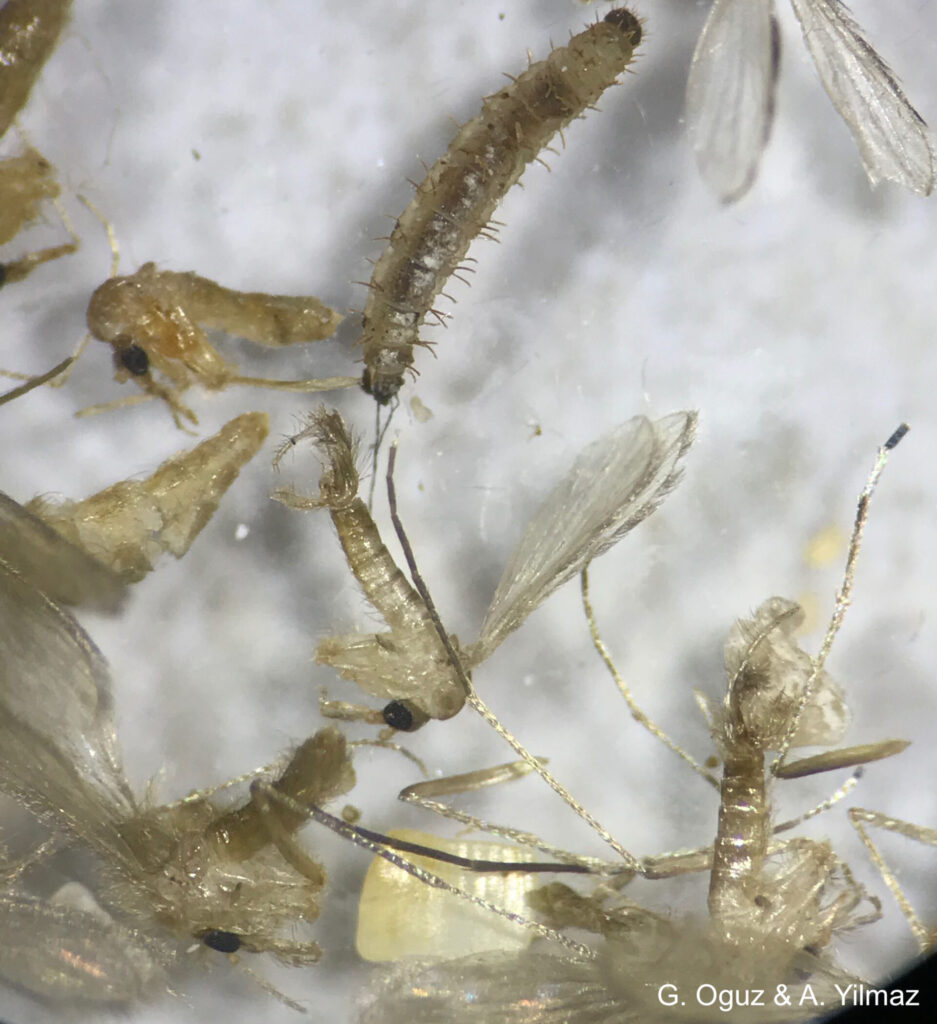The need behind the CLIMOS project:
Sand fly borne-diseases (SFBDs)
Phlebotomine sand flies (Diptera: Psychodidae: Phlebotominae) are worldwide vectors of an intracellular protozoan group Leishmania, bacterial and viral pathogens including the Phleboviruses. In Europe, the 25 known vector species were largely confined to the Mediterranean countries, however northern shifts in their geographical range have been recently documented.
There are several different clinical forms of human leishmaniasis: cutaneous leishmaniasis (CL), which causes skin sores, and visceral leishmaniasis (VL), which affects several internal organs (usually spleen, liver, and bone marrow), and is fatal if untreated in >95% of cases.
The Phleboviruses comprise more than 50% of sand fly-vectored viruses known to date. In Europe, the pathogenic Phleboviruses such as Sandfly Fever Sicilian virus, and Toscana virus that can lead to febrile illnesses and meningitis / encephalitis respectively circulate actively. Both viruses are actively circulating in the countries bordering the Mediterranean.

The clinical spectrum
Sand flies are tiny, hairy winged insects that belong to the Phlebotominae subfamily. They can be found in various regions around the world, primarily in warm and tropical climates. However, climate change is dramatically altering their geographical landscape.
The disruptive impact of climate change causing milder winters and warmer temperatures, increases sand fly rates of survival, extends their geographical reach into new regions, and prompts earlier, intensified sand fly activity, making their presence felt in unexpected regions.
Often active during twilight hours, sand flies use their specialized mouthparts to feed on blood predominantly from mammals, facilitating the transmission of phleboviruses and parasites. These pathogens cause diseases including summer meningitis and leishmaniasis that can affect both humans and animals. Leishmaniasis can lead to severe health issues and, in some cases fatality if not treated.
The lack of awareness, particularly in the areas where transmission is a new occurrence, increases the risk of failing to recognise these infections. For example, if your dog exhibits skin lesions, hair loss, or unexplained weight loss, do not hesitate to consult with a veterinarian promptly for a thorough evaluation. For humans, correct diagnosis may be a bit trickier, as leishmaniasis and phleboviruses symptoms can often mimic those of other infections including common flu-like symptoms.
Why CLIMOS?
CLIMOS (Climate Monitoring and Decision Support Framework for Sand Fly-borne Diseases Detection and Mitigation with Cost-benefit and Climate-policy Measures), focuses on an important vector-borne diseases transmission system susceptible to climate and environmental changes.
We seek to provide a better understanding of climate and environmental drivers of SFBDs, to reduce model uncertainties for better prognosis of their current and potential spread, and to relate these to socioeconomics and provide risk assessments for a diversity of stakeholders.
CLIMOS will deliver public access interactive mapping and information services and associated tangible recommendations for public and animal health, to enable and encourage public (social, environmental, and financial) preparedness.
Our overall goal is to minimise the risk of exposure to SFBDs in Europe, expansion to and from currently non- endemic regions and neighbouring countries, to protect the health and well-being of its citizens from climate and environment-related risks and impacts.
CLIMOS is targeting medical, veterinary, public and occupational health professionals, surveillance organizations, citizens, and all stakeholders that are responsible for monitoring and managing transmission and treatment, or those whose health is impacted or endangered by SFBDs.
